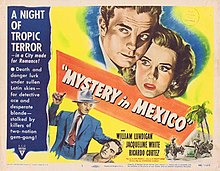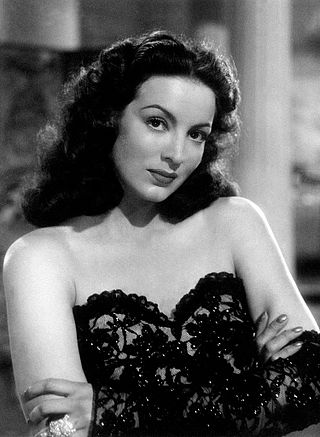
María de los Ángeles Félix Güereña was a Mexican actress and singer. Along with Pedro Armendáriz and Dolores del Río, she was one of the most successful figures of Latin American cinema in the 1940s and 1950s. Considered one of the most beautiful actresses of the Golden Age of Mexican cinema, her strong personality and taste for finesse garnered her the title of diva early in her career. She was known as La Doña, a name derived from her character in Doña Bárbara (1943), and María Bonita, thanks to the anthem composed exclusively for her as a wedding gift by Félix's second husband, Agustín Lara. Her acting career consists of 47 films made in Mexico, Spain, France, Italy and Argentina.

Mexican cinema dates to the late nineteenth century during the rule of President Porfirio Díaz. Seeing a demonstration of short films in 1896, Díaz immediately saw the importance of documenting his presidency in order to present an ideal image of it. With the outbreak of the Mexican Revolution in 1910, Mexican and foreign makers of silent films seized the opportunity to document its leaders and events. From 1915 onward, Mexican cinema focused on narrative film.

Yolanda Yvonne Montes Farrington, better known by her stage-name Tongolele, is an American-Mexican dancer, actress and vedette.

María de los Dolores Asúnsolo y López Negrete, known professionally as Dolores del Río, was a Mexican actress. With a career spanning more than 50 years, she is regarded as the first major female Latin American crossover star in Hollywood. Along with a notable career in American cinema during the 1920s and 1930s, she was also considered one of the most important female figures in the Golden Age of Mexican cinema, and one of the most beautiful actresses of her era.

Pedro Gregorio Armendáriz Hastings was a Mexican film actor who made films in both Mexico and the United States. With Dolores del Río and María Félix, he was one of the best-known Latin American movie stars of the 1940s and 1950s.

The Fallen Idol is a 1948 British mystery thriller film directed by Carol Reed, and starring Ralph Richardson, Bobby Henrey, Michèle Morgan, and Denis O'Dea. Its plot follows the young son of a diplomat in London, who comes to suspect that his family's butler, whom he idolises, has committed a murder. It is based on the 1936 short story "The Basement Room", by Graham Greene.
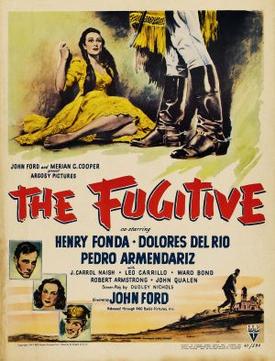
The Fugitive is a 1947 drama film starring Henry Fonda and directed by John Ford, based on the 1940 novel The Power and the Glory by Graham Greene. The film was shot on location in Mexico.
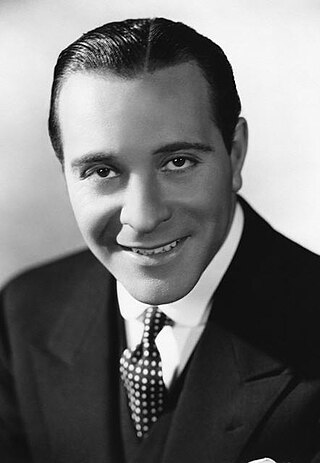
Ricardo Cortez was an American actor and film director. He was also credited as Jack Crane early in his acting career.
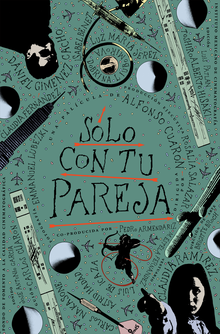
Sólo con tu pareja is a 1991 Mexican film by Alfonso Cuarón.

Walter Reed was an American stage, film and television actor.

Under the Volcano is a 1984 American drama film directed by John Huston and starring Albert Finney, Jacqueline Bisset, and Anthony Andrews, based on Malcolm Lowry's semi-autobiographical 1947 novel. The film follows the last 24 hours in the life of Geoffrey Firmin (Finney), an alcoholic British former consul in the small Mexican town of Quauhnahuac on the Day of the Dead in 1938.

William Paul Lundigan was an American film actor. His more than 125 films include Dodge City (1939), The Fighting 69th (1940), The Sea Hawk (1940), Santa Fe Trail (1940), Dishonored Lady (1947), Pinky (1949), Love Nest (1951) with Marilyn Monroe, The House on Telegraph Hill (1951), I'd Climb the Highest Mountain (1951) and Inferno (1953).

El misterio de Huracán Ramírez is a 1962 black-and-white Mexican luchador film directed and co-written by Joselito Rodríguez. The film is a sequel to Rodríguez's 1952 film Huracán Ramírez, with David Silva reprising his role as Fernando Torres. Other returning cast members include Tonina Jackson, Carmelita González, Titina Romay and Freddy Fernández. Pepe Romay joins the cast as Fernando's son Pancho, and Daniel García makes his film début as Huracán Ramírez, replacing Spanish-born wrestler Eduardo Bonada, who would make only a cameo appearance.

I Killed That Man is a 1941 American film directed by Phil Rosen that was a remake of his 1933 film The Devil's Mate. It starred Ricardo Cortez and was produced by the King Brothers.
Basque Mexicans are Mexicans of full, partial, or predominantly Basque ancestry, or Basque-born persons living in Mexico.

The Lone Wolf in Mexico is a 1947 American black-and-white mystery-adventure film directed by D. Ross Lederman for Columbia Pictures. It features Gerald Mohr as the title character, detective Lone Wolf. Chronologically the third-to-last Lone Wolf film in Columbia's theatrical series, it was followed by The Lone Wolf in London later in 1947 and The Lone Wolf and His Lady in 1949.
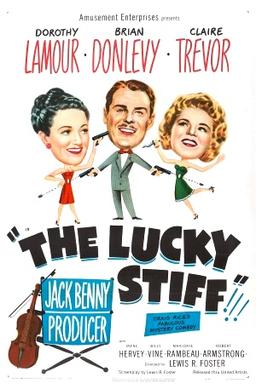
The Lucky Stiff is a 1949 American comedy crime film directed by Lewis R. Foster, starring Dorothy Lamour, Brian Donlevy, and Claire Trevor. The film is based on the 1945 novel of the same name by Craig Rice.
Events in the year 1979 in Mexico.

Adventures of Casanova is a 1948 American-Mexican historical adventure film directed by Roberto Gavaldón and starring Arturo de Córdova Lucille Bremer and Turhan Bey. It portrays a fictional version of the story of Casanova, and was intended to capitalize on the success of the Errol Flynn film The Adventures of Don Juan which was released the same year after a long production process. It is set in Sicily in the 1790s, with Casanova as a freedom fighter battling against the King's local governor Count de Brissac, who unknown to the monarch, is acting as a tyrant.
